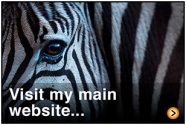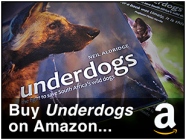 I’m currently working out of South Africa putting together a project on Wild Dogs and the struggle to secure and develop their population and I thought I’d grab the chance to post an update before I head back into the bush and away from the world of internet connectivity.
I’m currently working out of South Africa putting together a project on Wild Dogs and the struggle to secure and develop their population and I thought I’d grab the chance to post an update before I head back into the bush and away from the world of internet connectivity.
Wild Dogs always were pretty special to me but having the opportunity to follow them daily and observe their social intimacies and their hunting and survival strategies has given me a whole new respect for them.

So far I’ve been working alongside researchers from the Endangered Wildlife Trust on a reserve in South Africa’s Limpopo Province but the unique metapopulation conservation approach will also mean working in Botswana and the renowned Hluhluwe-Imfolozi reserve in KwaZulu-Natal.

Wild Dogs have large territories and out of denning season they can cover huge distances in barely no time at all and so I’ve been completely reliant on and continually impressed by the tracking skills of these dedicated few individuals.
Radio collars are used on certain individuals but the terrain and distances involved require more than an understanding of telemetry equipment, and a combination of traditional tracking techniques and an instinctive understanding of Wild Dog behaviour are put to the test daily.

As well as their susceptibility to disease, it may come as no surprise that Africa’s second most endangered carnivore has disappeared from much of its former range as a result of habitat loss and persecution.
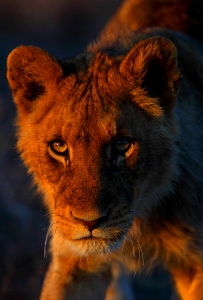 Lions are a Wild Dog’s greatest natural adversary though and don’t need a second invitation to kill either adult dogs or pups. Having lost their alpha male and litter to Lions last year, it’s been fascinating monitoring the movement of the pack to avoid Lions, even up into inaccessible rocky areas.
Lions are a Wild Dog’s greatest natural adversary though and don’t need a second invitation to kill either adult dogs or pups. Having lost their alpha male and litter to Lions last year, it’s been fascinating monitoring the movement of the pack to avoid Lions, even up into inaccessible rocky areas.
But the dogs can only avoid Lions when they know where they are and this is usually done by keeping those massive ears tuned for Lions calling. But we did face an agonising wait one morning as the pack literally brushed shoulders with the Lion pride by unwittingly lying up on the adjacent side of a hill.
Wild Dog movements are also governed by the availability of prey. Impala make up the majority of their diet and despite Wild Dogs being among the most efficient large carnivores when it comes to hunting, it was excruciating to witness a handful of failed attempts on their part.
 But one has to be on the ball when following Wild Dogs as they don’t hang around, especially when feeding, and on two occasions the pack consumed their prey in only a handful of minutes before we could even get to the scene.
But one has to be on the ball when following Wild Dogs as they don’t hang around, especially when feeding, and on two occasions the pack consumed their prey in only a handful of minutes before we could even get to the scene.
It’s been a pure privilege working on this project so far and there’s more to come including visits to a Wild Dog pack in Botswana who are currently raising a litter of 13 pups and KwaZulu-Natal to see how the Endangered Wildlife Trust is managing the essential element of conservation – community education and engagement.
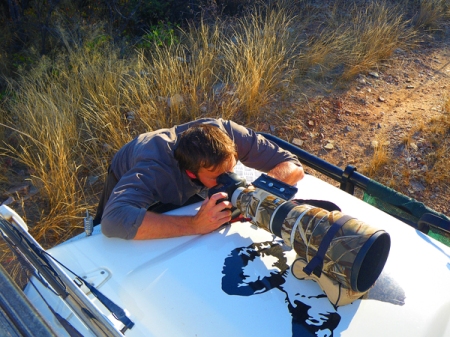
 Underdogs deals with the fight to save South Africa’s remaining wild dogs, a population that echoes the issues facing wild dog conservation across Africa. The African wild dog carries the unenviable title of the continent’s second most endangered carnivore and estimated numbers are tumbling towards just 3,000 across a continent whose human population recently topped one billion.
Underdogs deals with the fight to save South Africa’s remaining wild dogs, a population that echoes the issues facing wild dog conservation across Africa. The African wild dog carries the unenviable title of the continent’s second most endangered carnivore and estimated numbers are tumbling towards just 3,000 across a continent whose human population recently topped one billion.


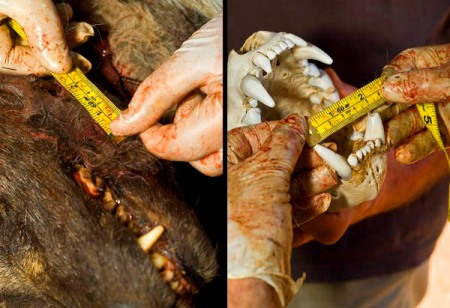





 Lions are a Wild Dog’s greatest natural adversary though and don’t need a second invitation to kill either adult dogs or pups. Having lost their alpha male and litter to Lions last year, it’s been fascinating monitoring the movement of the pack to avoid Lions, even up into inaccessible rocky areas.
Lions are a Wild Dog’s greatest natural adversary though and don’t need a second invitation to kill either adult dogs or pups. Having lost their alpha male and litter to Lions last year, it’s been fascinating monitoring the movement of the pack to avoid Lions, even up into inaccessible rocky areas.

 I recently returned to Scotland to try and get the shots of white-tailed eagles I felt I was missing from my
I recently returned to Scotland to try and get the shots of white-tailed eagles I felt I was missing from my 
 With some shots already in the bag from the previous day with the 1d mark3 and the calmest, brightest day of the lot upon us, the timing seemed perfect to try the new 5d mark2 with a 1.4x teleconverter and 400mm f2.8 combination. But, true to the unpredictable nature of photographing wildlife, the eagles didn’t want to budge from their nest, content with digesting the sea bird they had killed before our arrival on the scene earlier that morning.
With some shots already in the bag from the previous day with the 1d mark3 and the calmest, brightest day of the lot upon us, the timing seemed perfect to try the new 5d mark2 with a 1.4x teleconverter and 400mm f2.8 combination. But, true to the unpredictable nature of photographing wildlife, the eagles didn’t want to budge from their nest, content with digesting the sea bird they had killed before our arrival on the scene earlier that morning.
